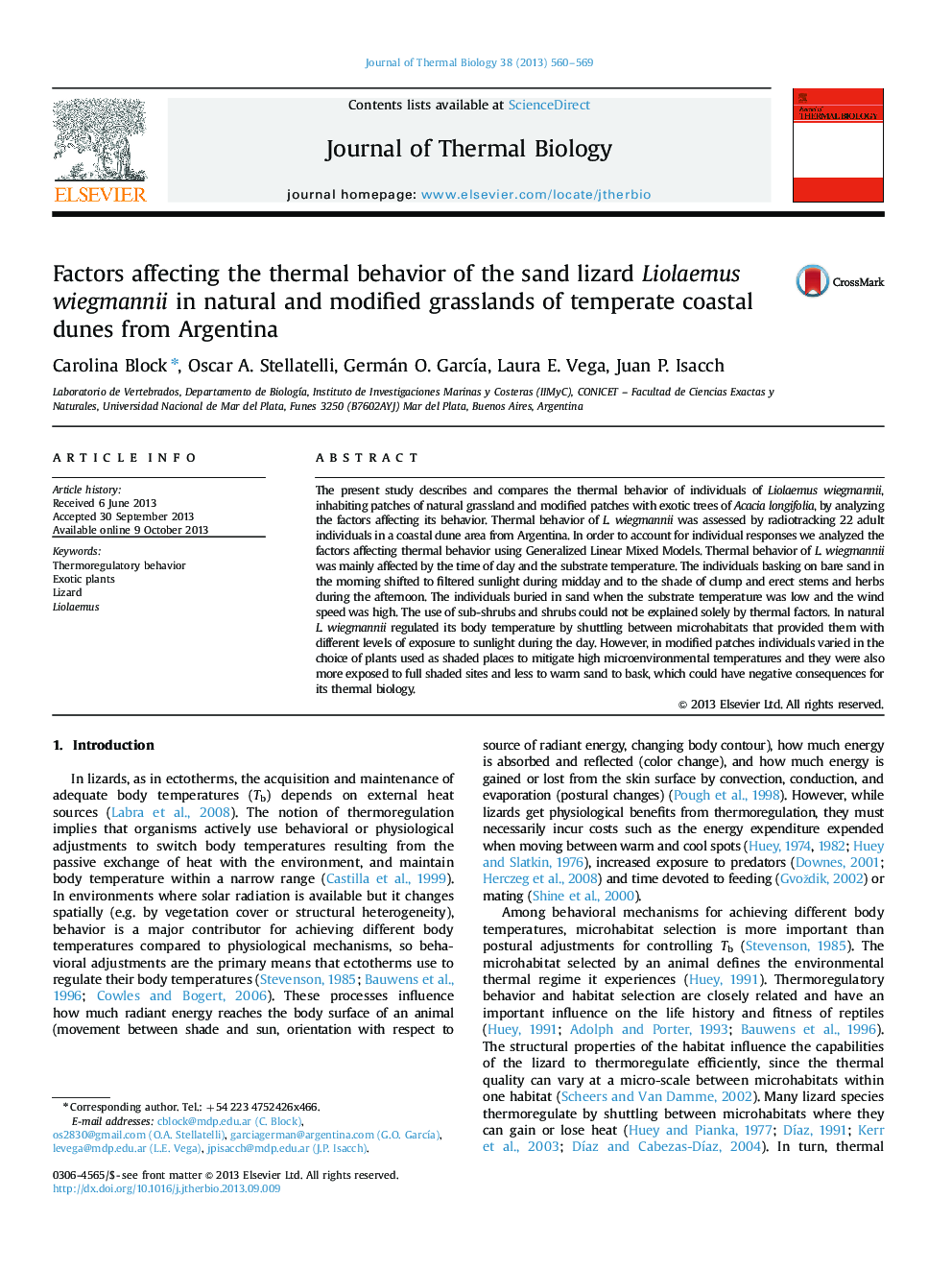| کد مقاله | کد نشریه | سال انتشار | مقاله انگلیسی | نسخه تمام متن |
|---|---|---|---|---|
| 2843040 | 1166068 | 2013 | 10 صفحه PDF | دانلود رایگان |

• Thermal behavior of Liolaemus wiegmannii was studied in modified and natural patches.
• Thermal behavior was affected by patch type, temperature, wind, time of day and sex.
• During the day lizards shifted to different microhabitats to thermoregulate.
• Thermal behavior responded to the habitat changes induced by Acacia longifolia.
The present study describes and compares the thermal behavior of individuals of Liolaemus wiegmannii, inhabiting patches of natural grassland and modified patches with exotic trees of Acacia longifolia, by analyzing the factors affecting its behavior. Thermal behavior of L. wiegmannii was assessed by radiotracking 22 adult individuals in a coastal dune area from Argentina. In order to account for individual responses we analyzed the factors affecting thermal behavior using Generalized Linear Mixed Models. Thermal behavior of L. wiegmannii was mainly affected by the time of day and the substrate temperature. The individuals basking on bare sand in the morning shifted to filtered sunlight during midday and to the shade of clump and erect stems and herbs during the afternoon. The individuals buried in sand when the substrate temperature was low and the wind speed was high. The use of sub-shrubs and shrubs could not be explained solely by thermal factors. In natural L. wiegmannii regulated its body temperature by shuttling between microhabitats that provided them with different levels of exposure to sunlight during the day. However, in modified patches individuals varied in the choice of plants used as shaded places to mitigate high microenvironmental temperatures and they were also more exposed to full shaded sites and less to warm sand to bask, which could have negative consequences for its thermal biology.
Journal: Journal of Thermal Biology - Volume 38, Issue 8, December 2013, Pages 560–569